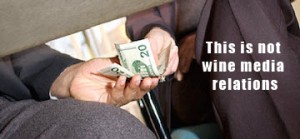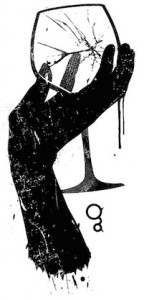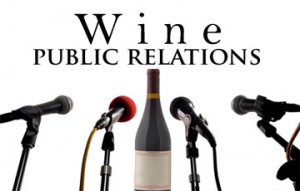 It is one of the most interesting questions that has ever so naturally formulated itself in front of my eyes: AT WHAT LEVEL OF COURTSHIP SHOULD THE COURTIER TAKE OFFENSE THAT THE OBJECT OF THEIR DESIRE HAS NOT RESPONDED THEY WAY THEY HOPE?
It is one of the most interesting questions that has ever so naturally formulated itself in front of my eyes: AT WHAT LEVEL OF COURTSHIP SHOULD THE COURTIER TAKE OFFENSE THAT THE OBJECT OF THEIR DESIRE HAS NOT RESPONDED THEY WAY THEY HOPE?
Put another way, how much does a wine producer have to spend on courting a wine writing before they may legitimately be offended that writer has not written about them?
This is the fascinating question implied by this comment by Damien Wilson of the Burgundy School of wine published in Harper’s:
What surprises wine producers is that bloggers could think it is appropriate that producers accept their freedom to write anything after having traveled and been accommodated at the producers expense. Remember, that a producers does not have to agree with a blogger’s perspective. But to not write anything after receiving value in wine, time, restauration and accommodation is simply a one-way transaction. In other descriptions of commerce, one way transfer of value could also be called “theft”.
Clearly Mr. Wilson believes that a certain amount of wine drinking, feeding, housing and travel that leads to no writing by the writer receiving these things is grounds for taking offense. But what if the writer traveled on their own dime to a winery, took a tour, sampled wine from the barrel, and snacked on cheese and charcuterie, then wrote nothing? Would that be grounds for offense—or, as Mr. Wilson implies, a form of “theft”? What if the writer’s travel by train is paid for, but the writer pays for their own accommodations, yet drinks the producers wine and eats their food and never writes anything? Can offense be legitimately taken? What if the writer is doing a piece on a producer’s home region, asks for a sample bottle of wine, receives it but then never writes about the producers? My the producer legitimately take offense?
Here is what I think any producer, marketer, publicist or administrator at a business school ought to understand intuitively: when any amount of funds are expended to introduce a wine product to a writer in the hopes they will cover it, there should be absolutely no moral, ethical or commercial expectation that the expenses ought to result in coverage; and certainly should not immediately result in coverage.
To believe otherwise is a foul misunderstanding of the nature of journalism as well as public relations. In fact, the proper way to understand the expense of courting the press is to see it as providing an education of the writer about a brand or product. One certainly goes about using marketing and media relations with the hopes that the producer’s story will be told as a result. But believing you have paid for results and ought by moral right to receive them will only result in disappointment and a poor relationship with the media.
Here’s the caveat. No writer should ever accept something of value from someone willing to offer it if they know they have no intention of ever writing about the produces or the subject matter they represent.
Mr. Wilson’s mistake is believing (and advising) that Media Relations is akin to a transaction. It’s not a transaction. It is an investment. Paying for a wine writer to travel to and stay at and estate and then feeding them is, in the business world, actually akin to placing an ad in a magazine or on an Internet site. Simply because one paid for the ad one cannot have an expectation that it will result in a specific number of sales. That’s crazy talk. They can hope it will. They can look at past experience with advertising, seeing what worked and what did not, and be confident that some sales will result. They can surely expect that the ad will reach a certain number of people. But to believe by right they ought to receive X number of orders as a result of the ad defies and understanding of marketing.




